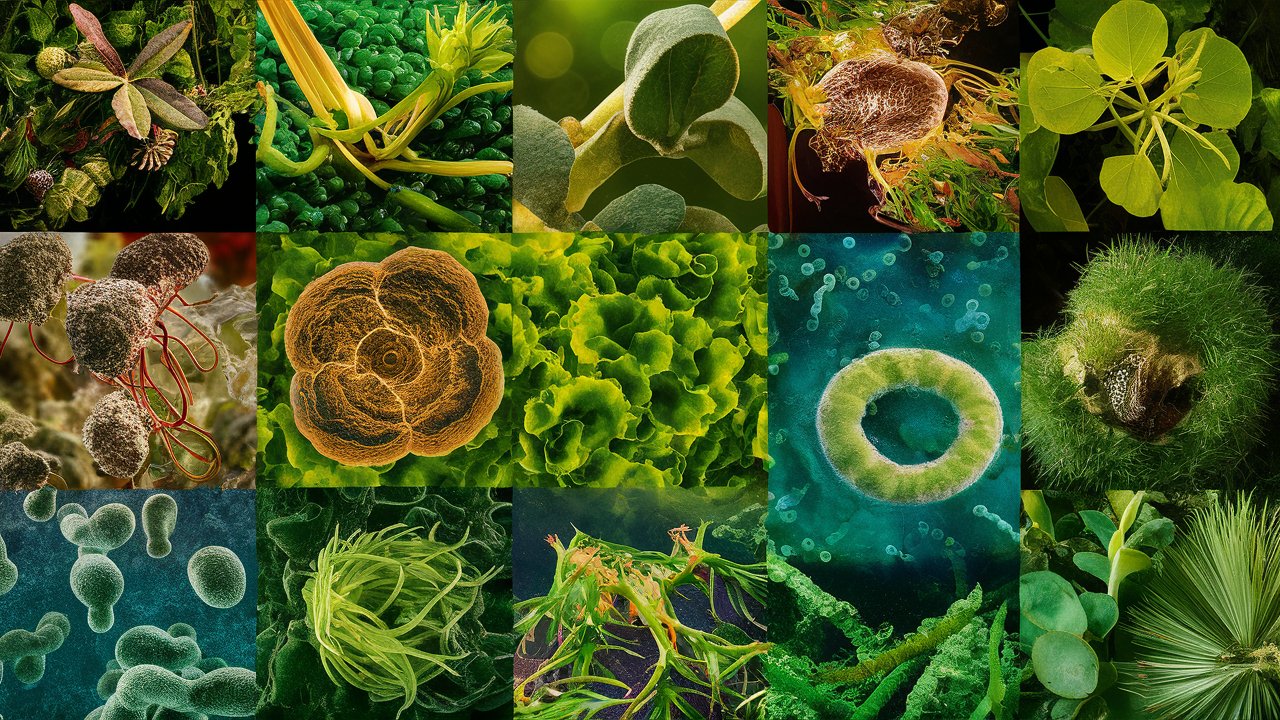Table of Contents
Some organisms in the natural world have a remarkable ability: they can make their own food. These organisms, known as autotrophs, include plants, algae, and certain bacteria. By understanding how these “self-chefs” operate, we gain insight into the fundamental processes that support life on Earth. This article will explore how organisms that make their own food use unique methods to thrive and why their role is crucial to the ecosystem.
The Science of Making Food: Photosynthesis Organisms That Make Their Own Food

What Is Photosynthesis?
Photosynthesis is the process by which many organisms make their food. During this process, plants, algae, and some bacteria convert sunlight into energy. They use sunlight to transform carbon dioxide and water into glucose (sugar) and oxygen. This ability allows them to produce food and provides other living creatures oxygen.
How Plants Use Photosynthesis
Plants are the best-known examples of Organisms That Make Their Own Food. They have special cells containing chlorophyll, a green pigment that captures sunlight. Through photosynthesis, plants turn sunlight into chemical energy used to create food. This process supports the plant itself and provides oxygen and food for other organisms.
Algae and Photosynthesis in Aquatic Environments
Algae are another group of organisms that make their food through photosynthesis. Found in oceans, lakes, and rivers, algae play a vital role in aquatic ecosystems. They produce a significant amount of the Earth’s oxygen and serve as the base of the food chain in many marine environments.
Also read: Whole Foods Little Rock: Discover the Best Organic Finds
Unique Methods of Food Production Organisms That Make Their Own Food
Chemosynthesis: An Alternative to Photosynthesis
While photosynthesis is common, some organisms use a different process called chemosynthesis. Instead of sunlight, these organisms use chemical energy to produce food. Chemosynthesis occurs in environments where sunlight is absent, such as deep-sea vents. Certain bacteria and archaea thrive in these extreme conditions, using chemicals like hydrogen sulfide to create food.
How Chemosynthesis Supports Life in Extreme Environments
Chemosynthesis supports life in harsh environments where sunlight cannot reach. The bacteria and archaea that perform this process are known as extremophiles. They create food by converting chemicals in their environment, such as sulfur compounds, into energy. This ability allows them to thrive in deep ocean vents and volcanic springs.
The Impact of Autotrophs on Ecosystems Organisms That Make Their Own Food
Providing Energy and Oxygen
Organisms that make their food are essential to ecosystems. By producing food and oxygen, they form the foundation of food chains. Plants and algae are primary producers that support herbivores, which in turn support carnivores. Without these autotrophs, ecosystems would collapse, and many life forms would struggle to survive.
How Autotrophs Contribute to Carbon Cycling
Autotrophs play a key role in carbon cycling. They take in carbon dioxide from the atmosphere and transform it into organic matter through photosynthesis. This process helps regulate atmospheric carbon levels and supports the global carbon cycle. By doing so, they help mitigate climate change and maintain ecosystem balance.
Fascinating Examples of Self-Chefs

The Venus Flytrap: A Carnivorous Plant
The Venus flytrap is a unique plant found in North America that makes its food but also captures insects for extra nutrients. This plant uses specialized traps to catch and digest insects. While it primarily relies on photosynthesis, the additional nutrients help it thrive in nutrient-poor soils.
Hydrothermal Vent Bacteria: Masters of Chemosynthesis
Hydrothermal vent bacteria are remarkable examples of organisms that make their food in extreme conditions. Living near underwater volcanoes, these bacteria use chemosynthesis to produce food from chemicals in the vent fluids. They are crucial to deep-sea ecosystems, providing energy for various other organisms.
The Wonders of Nature’s Self-Chefs Organisms That Make Their Own Food
Organisms that make their food, from plants and algae to bacteria, play a vital role in supporting life on Earth. Through processes like photosynthesis and chemosynthesis, these self-chefs create food, oxygen, and energy that sustain ecosystems.
FAQS
What are organisms that make their food called?
Organisms that make their food are called autotrophs. They produce their food through processes like photosynthesis or chemosynthesis.
How do plants make their food?
Plants make their food through photosynthesis. They use sunlight, water, and carbon dioxide to produce glucose (sugar) and oxygen, which helps them grow.
What is chemosynthesis, and how does it differ from photosynthesis?
Chemosynthesis is the process by which some organisms create food using chemical energy instead of sunlight. It occurs in environments where sunlight is unavailable, like deep-sea vents, unlike photosynthesis, which relies on sunlight.
Why are organisms that make their food important to ecosystems?
Autotrophs are crucial because they provide food and oxygen for other organisms. They are the base of food chains and help regulate carbon levels, supporting the overall balance of ecosystems.
Can you give an example of a plant that uses a unique method to get nutrients?
The Venus flytrap is a unique plant that primarily uses photosynthesis but also captures and digests insects to obtain additional nutrients from them, especially in nutrient-poor soils.
Understanding their unique abilities highlights the intricate connections in nature and underscores the importance of preserving these essential organisms. By appreciating these natural processes, we can better protect our planet and support its diverse life forms.

